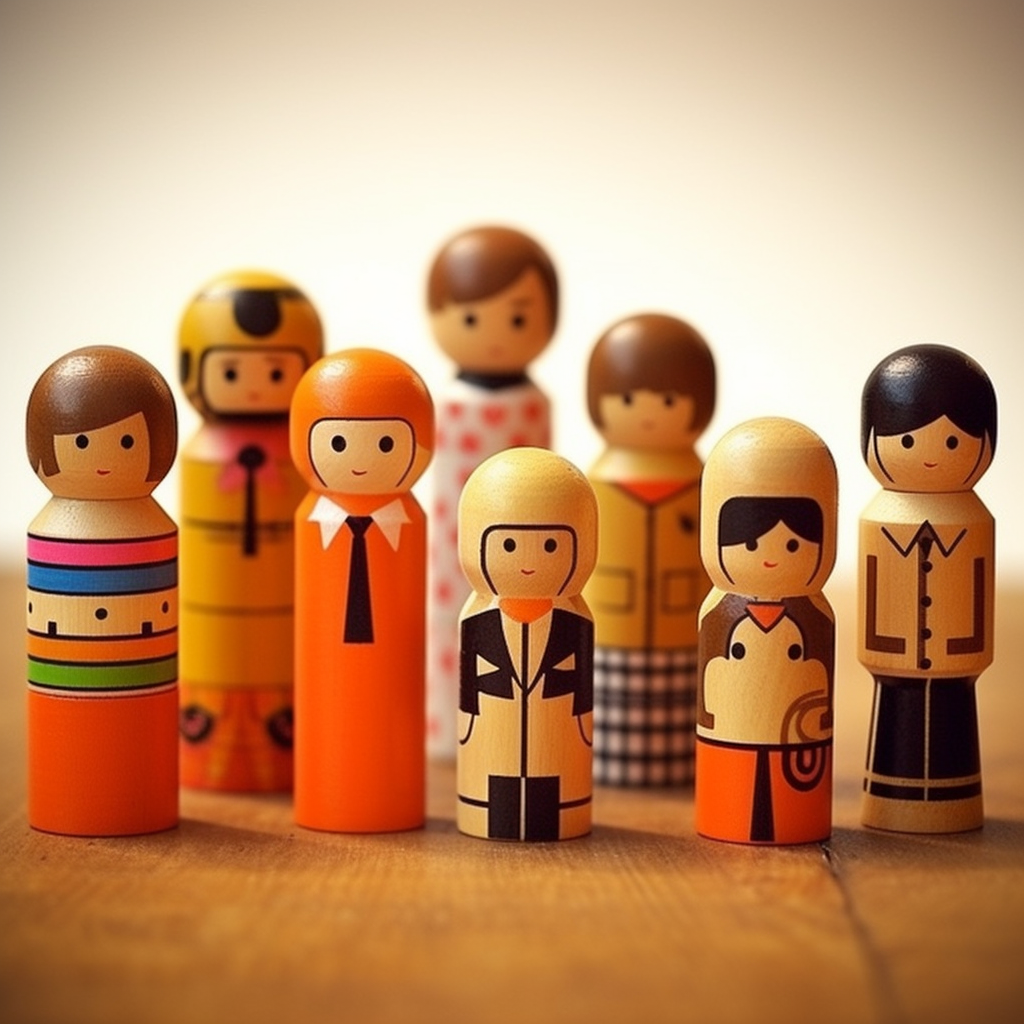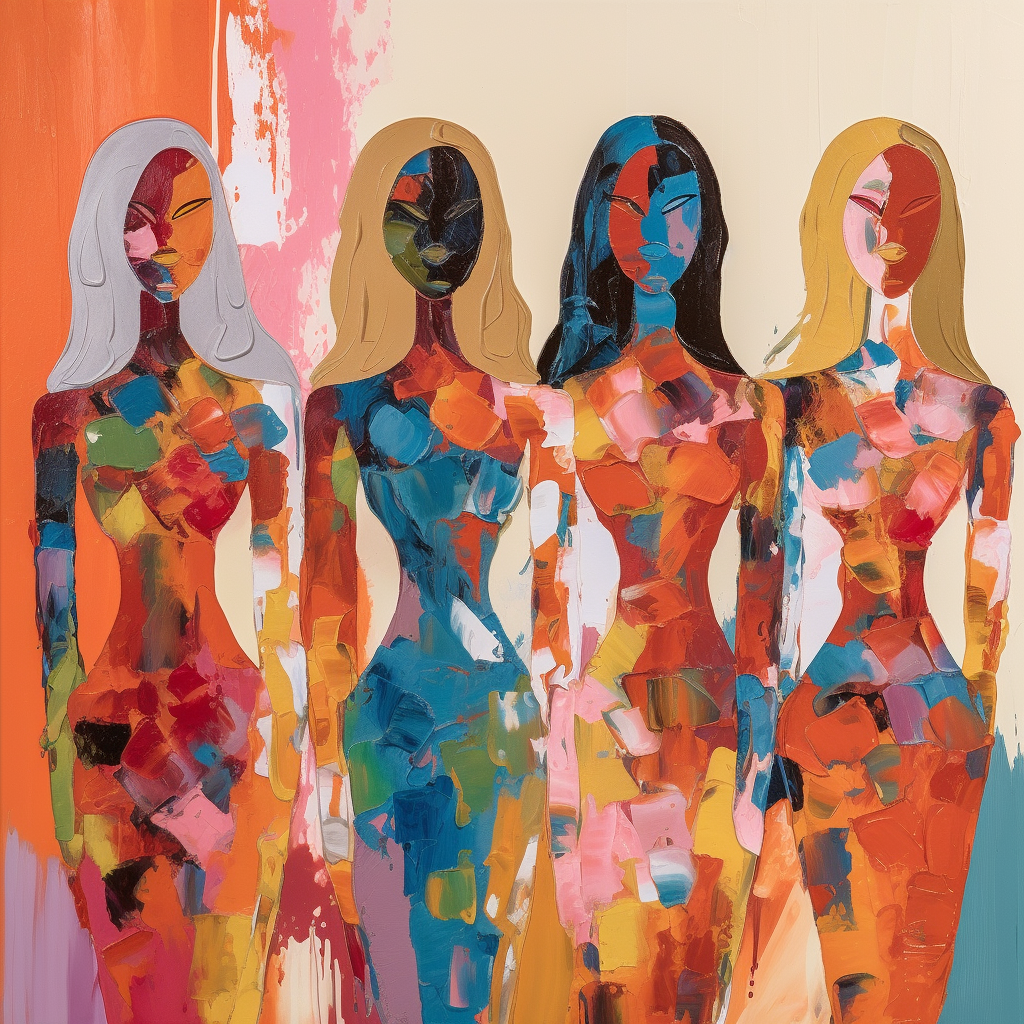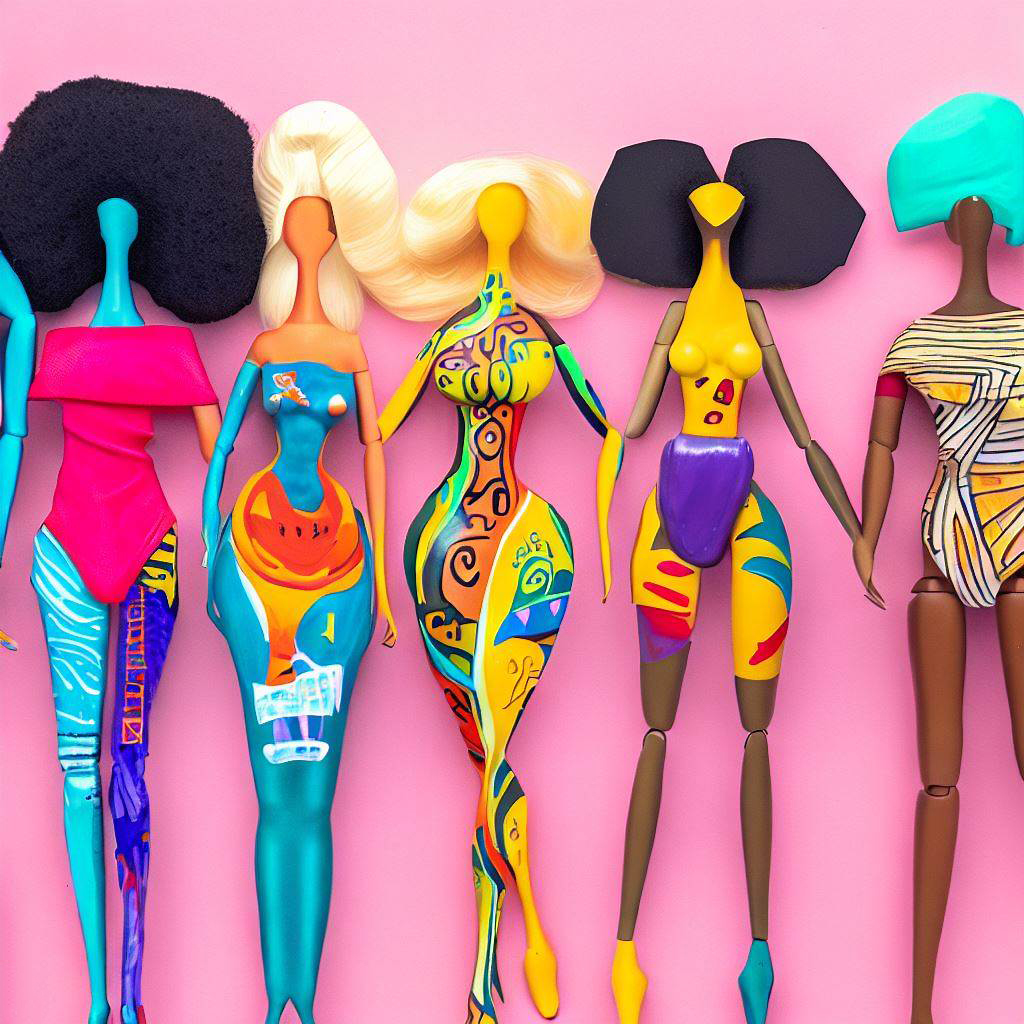For over six decades, Fisher-Price® Little People® have brought joy, entertainment, and imaginative play to children worldwide. Their simple design and bright colors captivated young minds, and their evolution into symbols of pop culture now spans generations. What began as faceless wooden peg figures has morphed into a vast collection mirroring our culture in miniature.
The Fisher-Price Little People story began in the 1950s, as a component of the Fisher-Price “Safety Bus” pull toy. These cylindrical wooden characters, though lacking in detail, were instantly adored by children. Recognizing their popularity, Fisher-Price began producing the Little People independently of their playsets in 1959. In the late ’60s, these figures took on a more familiar form as Fisher-Price switched to plastic production, with rounder bodies and a greater variety of characters.
Auto Amazon Links: No products found. http_request_failed: A valid URL was not provided. URL: https://ws-na.amazon-adsystem.com/widgets/q?SearchIndex=ToysAndGames&multipageStart=0&multipageCount=20&Operation=GetResults&Keywords=fisher-price+little+people+playsets&InstanceId=0&TemplateId=MobileSearchResults&ServiceVersion=20070822&MarketPlace=US Cache: AAL_393ef1f9e8387098d13441c7b8c1138e
The company’s first major venture into licensed characters came in the 1970s with a Sesame Street® playset. The iconic TV show’s characters were transformed into Little People figures, marking a milestone that would set a precedent for countless collaborations to come.
In the following decades, they continued to partner with a multitude of brands, reflecting the changing tides of popular culture. This cultural evolution began with the introduction of the Disney® collaborations, which have since become some of the most popular Little People sets. From Disney Princesses including Cinderella, Belle, Rapunzel,and Frozen to Mickey and Minnie and Toy Story, there is something for everyone.
Auto Amazon Links: No products found. http_request_failed: A valid URL was not provided. URL: https://ws-na.amazon-adsystem.com/widgets/q?SearchIndex=All&multipageStart=0&multipageCount=20&Operation=GetResults&Keywords=B0BLJPNGSQ|B0BLJSJGM7|B0BTDVYP6D|B087DPW4CZ&InstanceId=0&TemplateId=MobileSearchResults&ServiceVersion=20070822&MarketPlace=US Cache: AAL_998de5ab2f91692f4c5ff77279941edc
In 2019, we saw a divergence from the traditionally child-focused themes with the release of sets featuring WWE wrestlers Ultimate Warrior and “Macho Man” Randy Savage, and The Beatles Yellow Submarine. That same year, they also commemorated the beloved holiday classic A Christmas Story.
The trend continued into 2020 with sets themed on adult-favorite TV shows like The Office, and iconic franchises such as Masters of the Universe and The Lord of the Rings. Further diversifying their portfolio, Fisher-Price embraced comedy classics with sets for Elf and Golden Girls, and the timeless rock band, The Rolling Stones.
Auto Amazon Links: No products found. http_request_failed: A valid URL was not provided. URL: https://ws-na.amazon-adsystem.com/widgets/q?SearchIndex=All&multipageStart=0&multipageCount=20&Operation=GetResults&Keywords=B09SJY7S9S|B09NPCG7GY&InstanceId=0&TemplateId=MobileSearchResults&ServiceVersion=20070822&MarketPlace=US Cache: AAL_dcb56831083e514a77818f4b9b1e5abd
Recent years have seen a deluge of new additions. From the 2022 Emmy-winning comedy series Ted Lasso to the groundbreaking reality TV host, RuPaul, Fisher-Price has proven adept at keeping up with the times. Sports fans have been catered to with the Super Bowl/NFL sets, while anime lovers received a nod with Avatar: The Last Airbender.
Auto Amazon Links: No products found. http_request_failed: A valid URL was not provided. URL: https://ws-na.amazon-adsystem.com/widgets/q?SearchIndex=All&multipageStart=0&multipageCount=20&Operation=GetResults&Keywords=B09PB38Y5H|B09NPCDHTT&InstanceId=0&TemplateId=MobileSearchResults&ServiceVersion=20070822&MarketPlace=US Cache: AAL_b58006fd8adc9e74b42433c707c42acc
E.T. The Extra-Terrestrial, Barbie, Run D.M.C., Seinfeld, National Lampoon’s Christmas Vacation, Parks & Recreation, Disney Frozen, Disney Princess, Mickey Mouse, DC Suicide Squad, DC Super Friends, and The Notebook Movie special are all part of this expansive universe of Little People. More recent additions include sets inspired by the acclaimed police sitcom Brooklyn Nine-nine, cult film favorite The Big Lebowski, Disney’s musical sensation Encanto, and the cultural celebration Dia De Los Muertos.
Fisher-Price has also tapped into powerful narratives such as the ‘Inspiring Women‘ series, celebrating iconic women in history, and the Team USA Olympics set, honoring athletic achievement.
Auto Amazon Links: No products found. http_request_failed: A valid URL was not provided. URL: https://ws-na.amazon-adsystem.com/widgets/q?SearchIndex=All&multipageStart=0&multipageCount=20&Operation=GetResults&Keywords=B084P848SD|B09C14RFHB&InstanceId=0&TemplateId=MobileSearchResults&ServiceVersion=20070822&MarketPlace=US Cache: AAL_869760059f642b5da265850e48fa76d1
While Fisher-Price continues to produce their traditional family, friends, animal, and farm sets, it’s clear that the Little People brand has broadened its appeal. Some might argue that the recent influx of pop culture-themed sets has shifted the target demographic towards Gen-X and Boomer collectors, nostalgically purchasing mementos of their favorite TV shows, movies, and more.
Auto Amazon Links: No products found. http_request_failed: A valid URL was not provided. URL: https://ws-na.amazon-adsystem.com/widgets/q?SearchIndex=ToysAndGames&multipageStart=0&multipageCount=20&Operation=GetResults&Keywords=fisher-price+little+people+animal+playset&InstanceId=0&TemplateId=MobileSearchResults&ServiceVersion=20070822&MarketPlace=US Cache: AAL_58ab2218340309cc28b05612987a729e
However, Little People have always been about encouraging imagination and storytelling. Whether it’s a toddler playing with a Disney Princess or a Gen-Xer arranging their Seinfeld set, Fisher-Price Little People continue to foster creativity and joy. Their future lies not only in the hands of collectors, but also in those of the children who receive these toys. The Little People line’s expansive and inclusive nature can only serve to inspire future generations with diverse interests. After all, they’re not just toys, they’re a reflection of our evolving culture – an ever-expanding universe in miniature.
Auto Amazon Links: No products found. http_request_failed: A valid URL was not provided. URL: https://ws-na.amazon-adsystem.com/widgets/q?SearchIndex=All&multipageStart=0&multipageCount=20&Operation=GetResults&Keywords=B08HVVS3S9|B0BNKY3KY5|B000067R86|B0BSML351Q&InstanceId=0&TemplateId=MobileSearchResults&ServiceVersion=20070822&MarketPlace=US Cache: AAL_85e899ca23f6d76e4c6a931281705040




